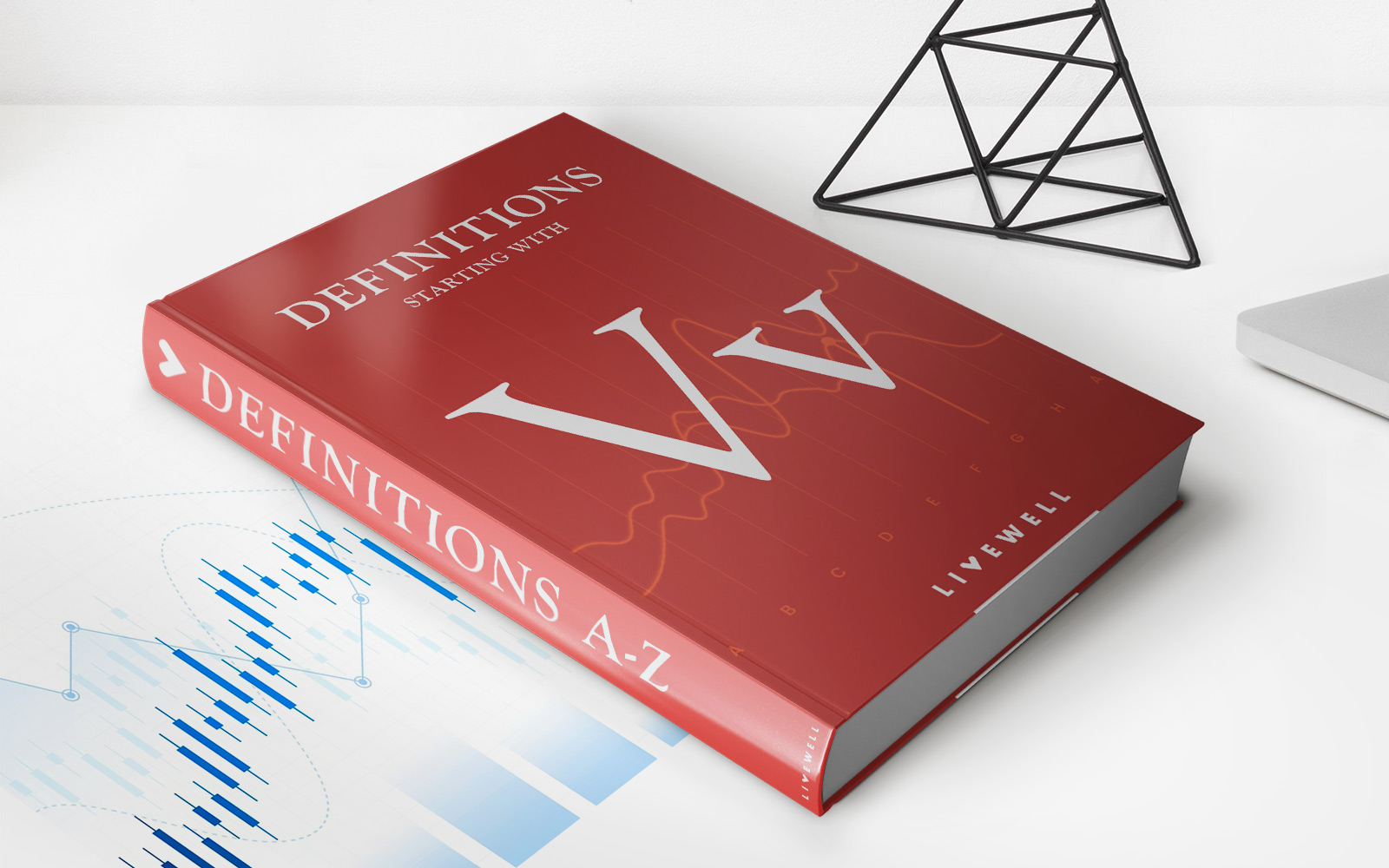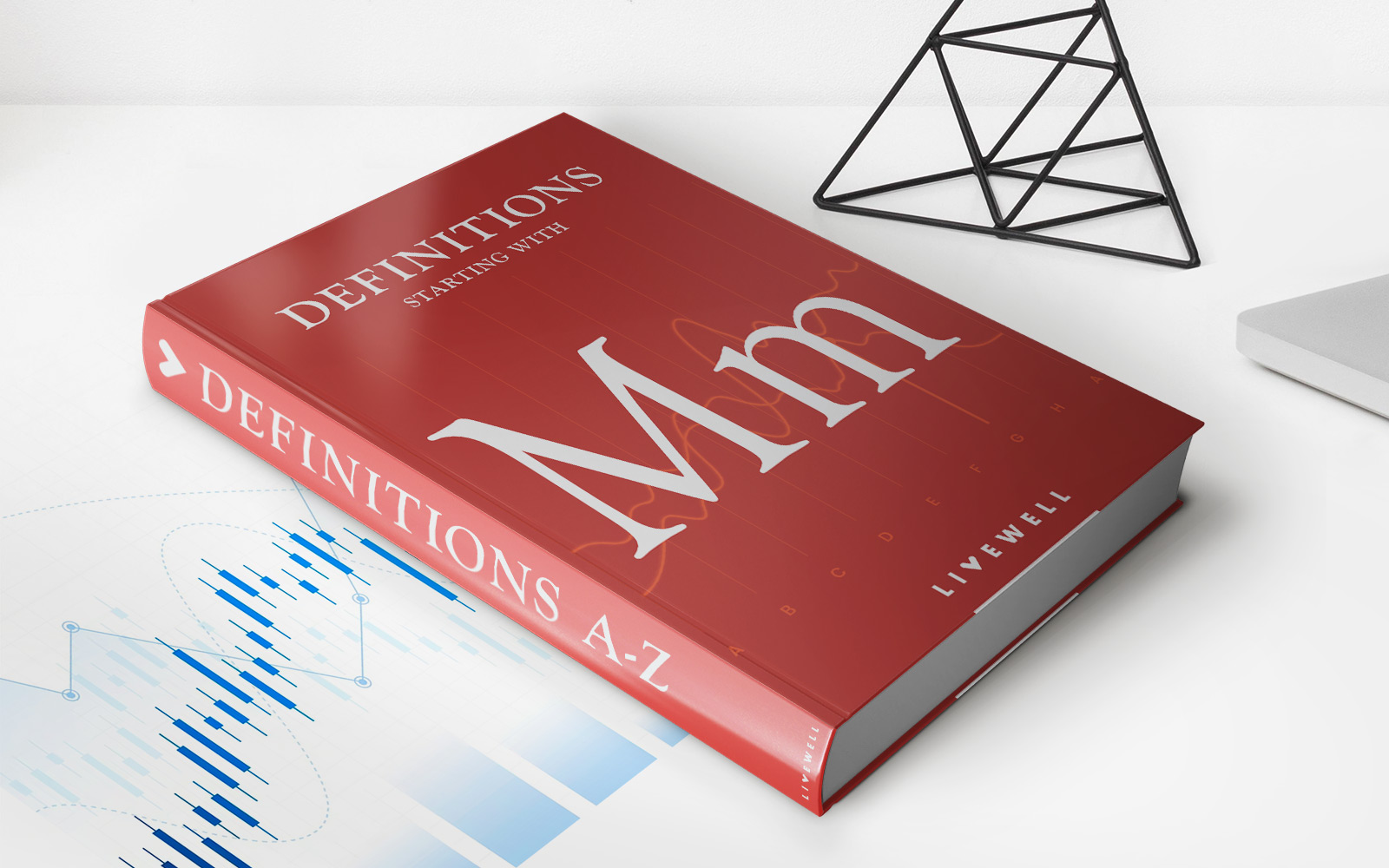

Finance
What Does Voluntary Life Insurance Cover?
Modified: February 16, 2024
Discover what voluntary life insurance covers and how it can protect your finances. Learn more about this essential financial safeguard today!
(Many of the links in this article redirect to a specific reviewed product. Your purchase of these products through affiliate links helps to generate commission for LiveWell, at no extra cost. Learn more)
Table of Contents
Introduction
Voluntary life insurance is an essential financial tool that provides individuals with valuable coverage to protect their loved ones in the event of their death. It offers peace of mind and financial security, allowing policyholders to ensure their beneficiaries are taken care of in their absence. While most people are familiar with traditional life insurance, voluntary life insurance operates differently, providing individuals with the flexibility to choose coverage options that suit their unique needs.
In this article, we will explore the various aspects of voluntary life insurance, including the coverage options available, the benefits it offers, and important considerations to keep in mind. Whether you are considering purchasing voluntary life insurance or simply curious to learn more about it, this article will provide you with a comprehensive overview.
It’s important to note that voluntary life insurance is typically offered by employers as part of their employee benefits package. It allows employees to increase their life insurance coverage above the basic amount provided by the employer. This additional coverage can be tailored to fit an individual’s specific circumstances and requirements, ensuring they have adequate protection in place.
Voluntary life insurance is different from group life insurance, which is generally provided by an employer at no cost to the employee. With voluntary coverage, the employee pays for the insurance, typically through payroll deductions. This arrangement gives employees the flexibility to determine the coverage level they need and allows them to customize their policy to meet their unique financial goals.
Now that we have a basic understanding of what voluntary life insurance is, let’s dive deeper into the different coverage options available.
Understanding Voluntary Life Insurance
Voluntary life insurance, also known as supplemental life insurance, is a type of coverage that provides individuals with the opportunity to supplement their existing life insurance policy. Unlike traditional life insurance, which may have limitations or maximum coverage amounts, voluntary life insurance allows individuals to increase their coverage based on their needs, without undergoing a medical examination.
One of the key features of voluntary life insurance is that it is entirely optional. While employers may offer it as part of their benefits package, individuals have the choice to opt in or decline participation. By choosing to enroll in voluntary life insurance, individuals can ensure their loved ones are protected financially in the event of their untimely demise.
Another important aspect of voluntary life insurance is that the premiums are typically paid by the employee, often through payroll deductions. Contributions are based on the coverage amount selected and the individual’s age and overall health. It is essential to carefully consider the cost of the premiums and the benefits offered to ensure they align with one’s budget and financial goals.
One of the significant advantages of voluntary life insurance is that it provides an additional layer of coverage on top of an individual’s existing life insurance policy. This means that if there are any limitations or exclusions in the primary policy, voluntary life insurance can bridge the gap and provide extra protection. It offers individuals the flexibility to tailor their coverage to meet their specific needs and circumstances.
Furthermore, voluntary life insurance is often portable, meaning that if an individual changes jobs, they can typically take their coverage with them. This portability ensures continued coverage even if transitioning to a different employer who may not offer the same benefits package. Being able to maintain coverage provides individuals with peace of mind and financial security, regardless of their employment situation.
It is important to note that voluntary life insurance is typically available in increments or multiples of an individual’s salary. This allows individuals to choose from a range of coverage options that align with their income and financial obligations. It is important to determine the appropriate coverage amount based on factors such as outstanding debts, mortgage payments, and providing for dependents.
In the following sections, we will explore the various coverage options available with voluntary life insurance, including death benefits, accidental death and dismemberment (AD&D) coverage, terminal illness benefits, living benefits, beneficiary designation, conversion options, as well as exclusions and limitations.
Coverage Options
Voluntary life insurance offers individuals a range of coverage options to meet their specific needs and financial goals. These options allow policyholders to customize their coverage based on factors such as their age, health, income, and outstanding obligations. Let’s explore some of the common coverage options available:
- Flat Amount: This option provides a fixed coverage amount that remains the same throughout the policy term. It is a straightforward and easy-to-understand option.
- Salary Multiple: With this option, the coverage amount is based on a multiple of the individual’s salary. For example, a policyholder may choose coverage equal to two or three times their annual salary.
- Age-Based Coverage: This option adjusts the coverage amount based on the policyholder’s age. As individuals age, their insurance needs may change, and this option ensures that coverage remains appropriate over time.
- Incremental Increase: This option allows for gradual increases in coverage over time. It can be beneficial for individuals who anticipate their financial obligations increasing in the future.
When selecting a coverage option, it is crucial to consider factors such as outstanding debts, mortgage payments, living expenses, education expenses for dependents, and any other financial responsibilities. By carefully assessing these factors, individuals can choose the coverage option that provides adequate protection for their loved ones in the event of their passing.
It’s important to note that the availability of coverage options may vary depending on the insurance provider and the specific policy terms. Some policies may offer additional coverage options beyond those listed above, allowing for further customization.
Now that we have an understanding of the coverage options available with voluntary life insurance, let’s explore some of the key benefits that these policies offer.
Death Benefit
The death benefit is the primary component of a voluntary life insurance policy. It is the amount of money that is paid out to the designated beneficiaries upon the death of the policyholder. The death benefit serves as a financial safety net for the policyholder’s loved ones, providing them with the means to cover expenses and maintain their standard of living in the absence of the insured individual.
The death benefit can be chosen based on the coverage options available, such as a flat amount, salary multiple, or age-based coverage. The chosen benefit amount should take into account factors such as outstanding debts, mortgage payments, daily living expenses, education expenses, and income replacement needs. It is important to review and update the chosen death benefit periodically to ensure it remains adequate as financial circumstances change.
One of the advantages of voluntary life insurance is that the death benefit is typically paid out as a lump sum, providing beneficiaries with immediate access to the funds. This allows them to utilize the money as needed, whether it be for funeral expenses, covering outstanding debts, or investing for the future.
Another important aspect of the death benefit is that it is generally tax-free for the beneficiaries, meaning they do not have to pay income tax on the amount received. This ensures that the full benefit amount goes directly to the intended recipients, providing them with much-needed financial support during a difficult time.
It is important to note that the death benefit is typically dependent on the policyholder’s continued payment of premiums. If premiums are not paid, the policy may lapse, and the death benefit may not be available. Therefore, it is essential to keep up with premium payments to ensure the policy remains active and the death benefit is secured.
It is worth mentioning that death benefits from voluntary life insurance policies generally do not go through the probate process. This means that the beneficiaries can typically receive the funds quickly without the need for legal proceedings or court involvement. This expedited process can provide immediate financial relief to the beneficiaries.
In the unfortunate event of the policyholder’s passing, the death benefit ensures that their loved ones are taken care of financially. It provides a crucial financial safety net, allowing the beneficiaries to cover expenses, pay off debts, and maintain financial stability during a challenging time.
Next, let’s explore the concept of Accidental Death and Dismemberment (AD&D) coverage, which is an additional benefit that some voluntary life insurance policies offer.
Accidental Death and Dismemberment (AD&D)
Accidental Death and Dismemberment (AD&D) coverage is an additional benefit that is often included in voluntary life insurance policies. It provides an extra layer of protection in the event of accidental death or severe injury resulting in dismemberment. While the death benefit discussed earlier covers death from any cause, AD&D coverage specifically focuses on accidents.
AD&D coverage offers financial compensation to the policyholder or their beneficiaries if the insured individual dies or suffers serious injuries due to an accident. Unlike the death benefit, which is based on the chosen coverage amount, AD&D benefits are typically paid out as a percentage of the policy’s face value.
In the case of accidental death, the AD&D benefit is usually equal to the full coverage amount. However, if the insured individual survives the accident but experiences dismemberment, the benefit amount may be adjusted based on the severity of the injury. Common examples of dismemberment covered under AD&D policies include the loss of a limb, sight, hearing, or the ability to speak.
It’s important to review the specific terms and conditions of the AD&D coverage, as policy providers may have different definitions and qualifications for dismemberment. Additionally, policyholders should understand any exclusions or limitations, such as certain risky activities that may not be covered under the AD&D benefit.
AD&D coverage can provide financial support to individuals and their loved ones when they need it most. If the insured person suffers an accident resulting in death or dismemberment, the benefit can help cover medical expenses, rehabilitation costs, and provide financial stability during recovery.
It’s crucial to consider whether adding AD&D coverage to a voluntary life insurance policy is necessary based on individual circumstances. For individuals with higher-risk professions or hobbies, AD&D coverage can provide extra peace of mind. However, for those in low-risk occupations, the extra coverage may not be as essential.
Now that we’ve explored AD&D coverage, let’s take a look at another important benefit of voluntary life insurance: the Terminal Illness Benefit.
Terminal Illness Benefit
A terminal illness benefit is a significant feature of voluntary life insurance that provides financial assistance to policyholders in the event of a terminal diagnosis. This benefit allows policyholders to access a portion of their life insurance benefit while they are still alive, helping to alleviate the financial burden that may arise during this difficult time.
When a policyholder is diagnosed with a terminal illness, typically with a life expectancy of 12 to 24 months, they can initiate the terminal illness benefit. This benefit allows them to receive a portion of their life insurance coverage in advance, enabling them to address immediate financial needs such as medical expenses, treatment costs, and making the necessary arrangements to ensure their affairs are in order.
The percentage of the life insurance benefit that can be accessed as a terminal illness benefit varies depending on the insurance provider and policy terms. Usually, policyholders can access a substantial portion of their coverage, often up to 50% or more, to assist with the expenses associated with the illness.
It is important to note that accessing the terminal illness benefit reduces the overall death benefit payable to beneficiaries upon the policyholder’s passing. However, this benefit provides invaluable support during a challenging time, allowing individuals to focus on their well-being and quality of life without the added stress of financial worries.
It is crucial to review and fully understand the terms and conditions of the terminal illness benefit when considering a voluntary life insurance policy. Some policies may have certain limitations, such as a waiting period or specific criteria that must be met to qualify for the benefit. It is essential to familiarize oneself with these details to ensure appropriate planning and preparation.
The terminal illness benefit can help policyholders maintain their financial stability and protect their loved ones during a time of significant health challenges. By providing access to a portion of the life insurance benefit in advance, it offers individuals the opportunity to focus on their well-being and make necessary arrangements without the added burden of financial strain.
Next, let’s explore the concept of living benefits, another valuable aspect of voluntary life insurance.
Living Benefits
Living benefits are a crucial component of voluntary life insurance policies that provide policyholders with financial support in certain situations while they are still alive. These benefits aim to address specific needs or challenges that individuals may face during their lifetime. Let’s explore some of the common types of living benefits offered in voluntary life insurance:
- Accelerated Death Benefit: This benefit allows policyholders who are diagnosed with a terminal illness to receive a portion of their life insurance benefit in advance. This can help cover medical expenses, treatment costs, and other financial obligations.
- Long-Term Care Benefit: Some policies offer long-term care benefits, which provide policyholders with financial assistance for long-term care services, such as in-home care, nursing home care, or assisted living facilities.
- Chronic Illness Benefit: This benefit is designed for individuals who require ongoing care due to chronic illnesses. Policyholders can access a portion of their life insurance benefit to support medical costs, home modifications, or other necessary accommodations.
- Critical Illness Benefit: Certain policies offer critical illness benefits, which provide a lump sum payment to policyholders who are diagnosed with a covered critical illness. This benefit can help cover medical expenses, replace lost income, or finance necessary lifestyle adjustments.
Living benefits provide policyholders with financial flexibility and support during challenging times. They offer individuals the opportunity to access a portion of their life insurance benefit when they need it most, allowing them to maintain their quality of life and alleviate financial strain.
It’s important to understand that the availability and specific terms of living benefits may vary depending on the insurance provider and the policy. Policyholders should review their policy documents carefully to understand the coverage and requirements associated with each living benefit option.
Living benefits can be valuable additions to a voluntary life insurance policy, providing peace of mind and financial security in the face of unexpected health challenges. By offering financial assistance and support during difficult times, these benefits help policyholders and their families navigate the complexities of medical care and financial obligations.
Now that we have explored the concept of living benefits, let’s move on to discussing the importance of beneficiary designation in voluntary life insurance policies.
Beneficiary Designation
Beneficiary designation is a critical aspect of voluntary life insurance policies that allows policyholders to specify who will receive the death benefit upon their passing. The chosen beneficiaries are the individuals or entities entitled to receive the insurance proceeds, ensuring that the policyholder’s assets are distributed according to their wishes.
When selecting beneficiaries, it’s essential to carefully consider one’s personal and financial circumstances. Common choices for beneficiaries include spouses, children, family members, or even charitable organizations. The selection should reflect the policyholder’s priorities and goals for the distribution of their assets.
It’s important to regularly review and update beneficiary designations to account for any changes in personal relationships, such as marriage, divorce, the birth of children, or the passing of a loved one. By keeping beneficiary designations up to date, policyholders can ensure that their insurance proceeds are distributed to the intended recipients.
Multiple beneficiaries can be designated, and the distribution of the death benefit can be allocated among them in percentages or specific dollar amounts. It’s recommended to clearly communicate one’s wishes to the beneficiaries and consider involving an estate planning professional or financial advisor to ensure that the beneficiary designation aligns with one’s overall estate planning goals.
In cases where the primary beneficiary passes away before the policyholder, contingent beneficiaries come into play. Contingent beneficiaries are named as backup recipients who will receive the proceeds if the primary beneficiaries are no longer alive.
Beneficiary designations also play a crucial role in avoiding probate, a legal process that can delay the distribution of assets and incur additional costs. By designating beneficiaries, the insurance proceeds can be distributed directly to them without going through the probate process. This ensures that the beneficiaries can quickly access the funds and provides a smoother transfer of assets.
It’s important to regularly review and update beneficiary designations to ensure they reflect one’s current wishes and circumstances. Life events and changes in personal relationships may necessitate adjustments to the chosen beneficiaries. Regularly checking beneficiary designations and making any necessary updates will help ensure that the intended individuals or organizations receive the insurance proceeds according to the policyholder’s wishes.
Now that we have discussed the importance of beneficiary designation, let’s explore the concept of conversion options in voluntary life insurance.
Conversion Options
Conversion options are a valuable feature of voluntary life insurance policies that allow policyholders to convert their coverage to a permanent life insurance policy without the need for a medical examination. This option is particularly beneficial when circumstances change, and individuals desire a more long-term and comprehensive insurance solution.
Conversion options are typically time-limited and must be exercised within a specific period, often during the first few years of the policy. The specific terms and availability of conversion options may vary depending on the insurance provider and the policy type. It is important to review and understand the conversion options available in the specific policy to make an informed decision.
By exercising the conversion option, policyholders can convert their voluntary life insurance coverage to permanent life insurance, such as whole life or universal life insurance. This transition provides benefits such as a guaranteed death benefit, potential cash value accumulation, and the ability to keep coverage for the duration of one’s lifetime, as long as premiums are paid.
The conversion option allows individuals to secure permanent life insurance coverage without undergoing additional underwriting or medical evaluation. This can be particularly advantageous if the policyholder’s health has deteriorated since the initial purchase of the voluntary life insurance policy, as it eliminates the risk of being denied coverage or facing significantly higher premiums based on current health conditions.
Conversion options offer flexibility and the ability to adapt insurance coverage to changing circumstances. For example, if an individual initially purchased voluntary life insurance to cover a specific financial obligation, such as a mortgage, but now desires more comprehensive lifelong coverage, the conversion option provides a seamless transition.
It is important to note that while conversion options provide valuable benefits, they may come with additional costs. Permanent life insurance policies generally have higher premiums compared to term life insurance. It is crucial to evaluate the long-term affordability of the converted coverage and consider the financial implications before making the decision.
Utilizing the conversion option allows policyholders to customize their life insurance coverage to meet their evolving needs. By converting to permanent life insurance, individuals can secure coverage for the rest of their lives, enjoy potential cash value growth, and have the peace of mind that their beneficiaries will receive a guaranteed death benefit.
Now that we have explored conversion options, let’s delve into the topic of exclusions and limitations that are commonly found in voluntary life insurance policies.
Exclusions and Limitations
Like any insurance policy, voluntary life insurance comes with certain exclusions and limitations that policyholders need to be aware of. These exclusions and limitations define specific circumstances under which the policy may not provide coverage. It is crucial to thoroughly review the policy documents to understand these provisions and their potential impact. Let’s explore some common exclusions and limitations found in voluntary life insurance policies:
- Suicide Clause: Many life insurance policies, including voluntary life insurance, have a suicide clause. This clause typically states that if the policyholder dies by suicide within a specified period after the policy is issued (often two years), the death benefit may not be paid out. After the specified time has passed, the death benefit is typically payable even in the case of suicide.
- Exclusions for Risky Activities: Some policies may exclude coverage for certain high-risk activities such as skydiving, bungee jumping, or participation in extreme sports. Engaging in these activities may lead to the denial of a claim if it can be proven that the accident resulting in injury or death was directly related to the excluded activity.
- Exclusions for Pre-Existing Conditions: Pre-existing conditions, such as a chronic illness or a medical condition diagnosed prior to obtaining the policy, may be excluded or have limitations in voluntary life insurance coverage. It is essential to understand how the policy defines and addresses pre-existing conditions to avoid any surprises when filing a claim.
- Exclusions for Illegal Activities: Policies may exclude coverage in case of death resulting from participating in illegal activities or acts of violence. Engaging in such activities may void the policy and render the death benefit unpayable.
- Limitations for Intoxication or Drug Use: Some policies may have exclusions or limitations related to death caused by drug use or being under the influence of alcohol or illegal substances. These limitations may impact the eligibility for a death benefit if substance abuse is deemed to be a contributing factor.
It is important to remember that each insurance policy is unique, and the specific exclusions and limitations will vary. Policyholders must review their policy documents and seek clarification from their insurance provider or agent to fully understand the extent of coverage and any potential limitations.
Understanding the exclusions and limitations of the policy is crucial to make informed decisions regarding coverage and to avoid any surprises when filing a claim. Policyholders should carefully evaluate their insurance needs, disclose accurate and complete information during the application process, and ask questions to ensure they have a clear understanding of policy provisions.
While exclusions and limitations may seem restrictive, they are in place to ensure fairness and manage risk for both the policyholder and the insurance company. By understanding these limitations, policyholders can make informed decisions and take appropriate steps to mitigate potential coverage gaps.
Now that we have discussed exclusions and limitations, let’s conclude our exploration of voluntary life insurance.
Conclusion
Voluntary life insurance provides individuals with the opportunity to enhance their financial security and protect their loved ones in the event of their passing. By offering flexible coverage options, including death benefits, accidental death and dismemberment (AD&D) coverage, terminal illness benefits, living benefits, conversion options, and beneficiary designations, voluntary life insurance enables policyholders to tailor their coverage to meet their specific needs and circumstances.
Understanding the various aspects of voluntary life insurance is crucial when considering this type of coverage. By familiarizing oneself with the coverage options available, individuals can choose the appropriate coverage amount and type that aligns with their financial goals. This allows them to ensure that their loved ones are financially protected in their absence.
Through the death benefit, voluntary life insurance offers a much-needed financial safety net to beneficiaries. Additionally, AD&D coverage provides extra protection in the event of accidental death or severe injury. The terminal illness benefit allows policyholders to access a portion of their coverage while still alive, assisting with medical expenses and other financial obligations.
Living benefits further enhance voluntary life insurance by offering additional financial support in specific circumstances, such as critical illness or long-term care needs. Conversion options provide flexibility by allowing policyholders to transition from term coverage to permanent life insurance without the need for a medical examination.
Beneficiary designation ensures that the death benefit is distributed according to the policyholder’s wishes, while exclusions and limitations define specific situations where coverage may be restricted. Understanding these provisions is crucial to avoid any surprises or gaps in coverage.
In conclusion, voluntary life insurance offers individuals the opportunity to protect their loved ones and secure their financial future. By exploring the coverage options, benefits, and provisions available, individuals can make informed decisions and customize their policies to meet their specific needs. It is important to review policy documents carefully, seek guidance from insurance professionals, and regularly reassess coverage as circumstances change.
Remember, voluntary life insurance provides peace of mind, financial security, and a way to ensure that those we care about are taken care of even when we are no longer here.+














